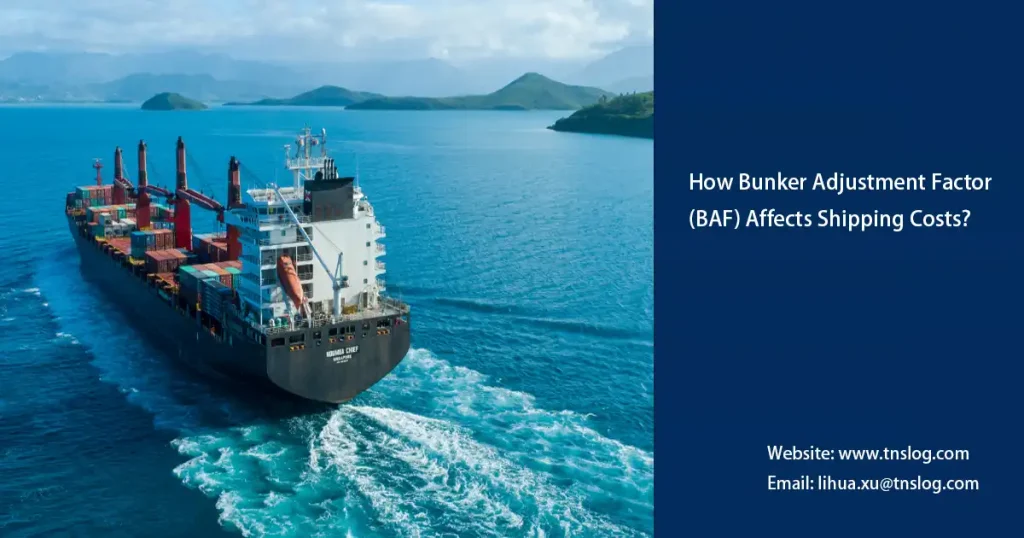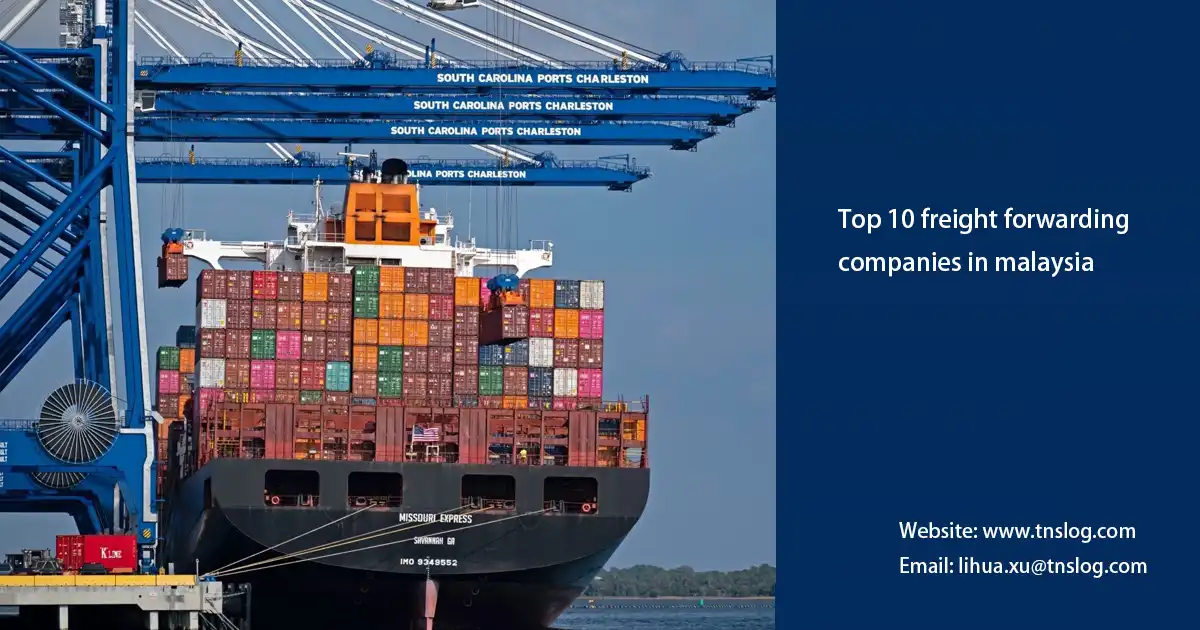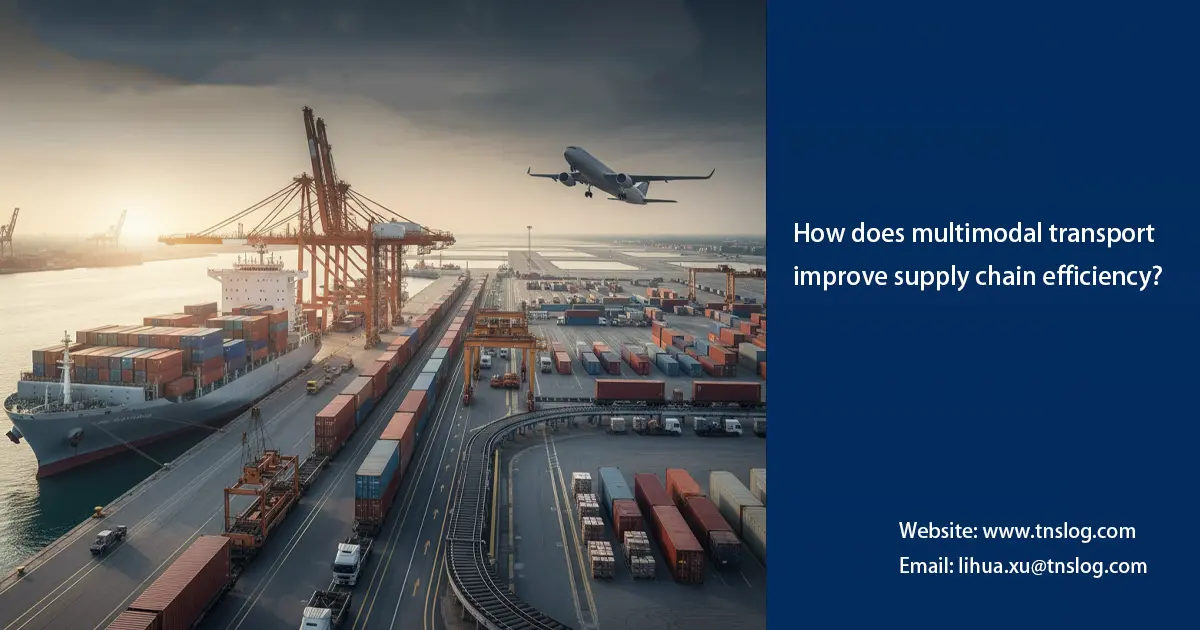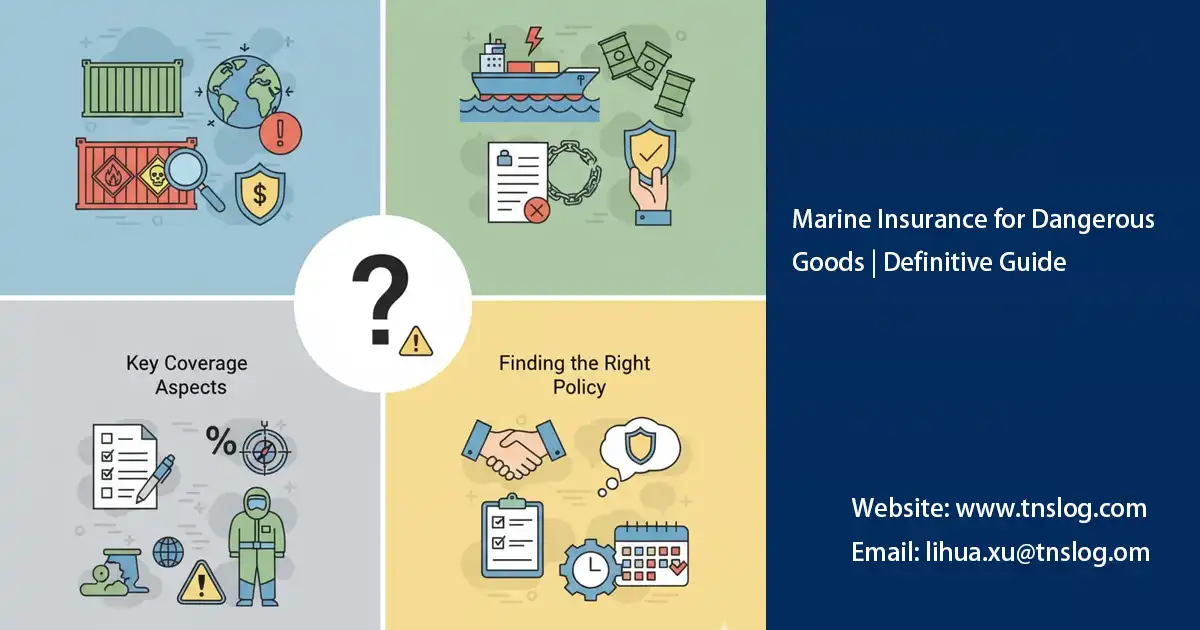How Bunker Adjustment Factor (BAF) Affects Shipping Costs?
In recent years, international oil prices have fluctuated dramatically, leading shipping companies to frequently adjust their bunker adjustment fees (BAF). By October 2025, Brent crude oil prices were approaching $80 per barrel, driving up shipping fuel costs. Many exporters and importers, upon receiving their bills, were puzzled by the “Bunker Adjustment Factor” (BAF): Why is it adding tens of dollars per container? How does it affect overall freight rates in Malaysia?
As a professional freight forwarder in Malaysia, TNSLOG SERVICES SDN BHD has many years of experience in maritime logistics. We will provide a comprehensive explanation of the BAF’s definition, calculation logic, and strategies to help you optimize your shipping costs.

What Is Bunker Adjustment Factor (BAF)?
A Bunker Adjustment Factor (BAF) is a surcharge added to shipping freight rates to account for fluctuations in fuel costs. It’s a way for shipping lines to cover volatile expenses for the marine fuel used in their vessels. The BAF is tied to global oil prices, particularly Brent crude oil, and is periodically updated, typically monthly or quarterly, to reflect changes in the fuel market.
The BAF is closely tied to the base freight rate: it’s not a fixed fee but a floating surcharge, typically calculated per TEU (twenty-foot equivalent unit) or tonnage. For example, if fuel prices rise by $50 per ton, the BAF might increase by $10-15 per TEU, directly adding to the shipping cost. Starting October 1, 2025, CNC Line will adjust its BAF, replacing HSFO with VLSFO, adding $55 per 20-foot dry unit and $110 per 40-foot unit.
Why Do Carriers Charge BAF?
Oil price fluctuations are one of the biggest variables in shipping costs. By 2025, geopolitical tensions and supply chain disruptions had driven VLSFO prices up from $500/ton at the beginning of the year to $650/ton, accounting for 40-50% of shipping companies’ operating costs. Shipping companies charge BAF precisely to hedge against this uncertainty and avoid frequent adjustments to base freight rates.
The BAF mechanism maintains freight rate stability and transparency: it acts like a “floating clause,” automatically adjusting monthly or quarterly based on a fuel index (such as Bunkerworld’s IFO380). The BAF announced by Swire Shipping in November 2025 is based on such an index, ensuring customers have clear visibility into freight fuel adjustments.
How does it differ from PSS (Peak Season Surcharge) or EBS (Emergency Bunker Surcharge)? BAF is a regular adjustment to address daily oil price fluctuations; PSS responds to seasonal demand peaks; and EBS is for emergencies such as sudden oil price spikes. For example, EBS is often used for emergency response on North American routes. The difference between BAF and EBS is that the former is preventative, while the latter is reactive.
How Is BAF Calculated?
Shipping companies calculate BAF based on a fuel price index, typically using VLSFO or MGO (Marine Gas Oil) as a benchmark, with global port average prices sampled monthly. The core formula is simplified to: BAF = Fuel Price × Trade Factor, where the Trade Factor takes into account route distance, vessel efficiency, and load factor.
A more detailed calculation is: BAF = (Total Fuel Consumption × Voyage Time) / (Total Vessel Capacity) × Utilization Factor × Fuel Unit Price. For example, assuming a base fuel price of $300 per ton, a Malaysia to US route with a fuel consumption of 0.5 tonnes per TEU, a 30-day voyage, and a 90% utilization rate, the BAF is ≈ 0.5 × 30 / Vessel Capacity × 0.9 × 300, which equals $135 per TEU. CMA CGM adjusted all equipment types based on this logic in its Q4 2025 BAF announcement, effective October 1st.
How to Manage or Reduce BAF Costs?
To mitigate the impact of BAF, take a strategic approach. First, sign long-term contracts to lock in benchmark fuel prices and avoid the volatility of the spot market—this can reduce BAF risk by up to 30%.
Second, choose fuel-efficient routes and carriers. Maersk’s BAF adjustments for 2025 emphasize greener vessels, and optimizing the Malaysia-Europe route can reduce unit fuel consumption by 15%. Furthermore, using less-than-container load (LCL) and integrated logistics solutions can spread BAF across multiple shipments, reducing per-shipment costs by 10%.
Finally, partnering with a professional freight forwarder is crucial. TNSLOG SERVICES offers multi-route comparisons and real-time BAF alerts, eliminating the need to worry about BAF, as we’ve minimized all shipping costs.
Conclusion
While the Bunker Adjustment Factor (BAF) cannot be eradicated, understanding its mechanisms, actuarial formulas, and strategic responses can significantly reduce its impact on ocean freight costs. If you’re worried about rising bunker surcharges (BAFs), contact TNSLOG SERVICES SDN BHD. We’ll provide flexible, transparent, and cost-effective international shipping solutions to help you lock in costs and facilitate global trade. Contact us via WhatsApp(+6016 600 9972) or email now and receive a quote within 24 hours. Take action now and make BAF a helper, not a burden!
Have Anything To Ask Us?
Please fill in your email in the form and we’ll get back to assist you soon!




